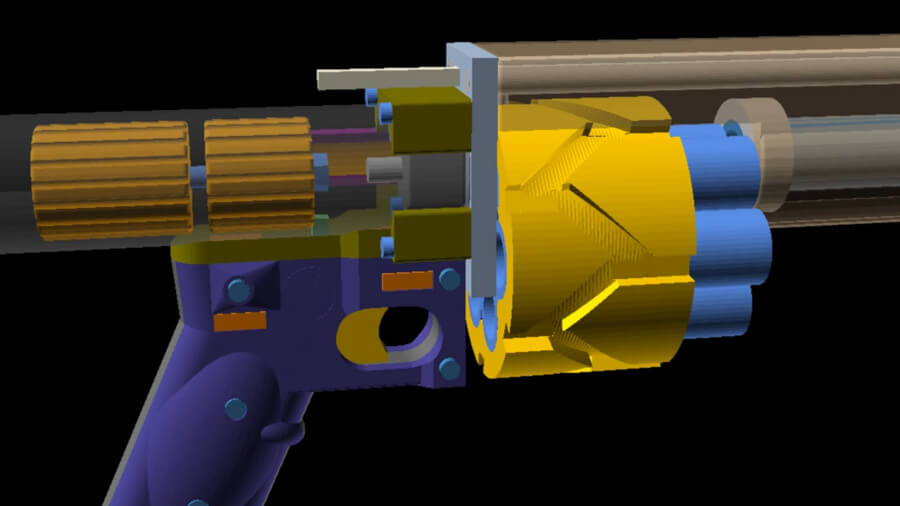The Liberator12k is a project dating back three years. Started by creator Jeffrey Rodriguez, it combines common hardware store parts, some steel tubing, and 3D-printed parts to build a revolving-cylinder shotgun.
While it’s still in development and is still more of a proof-of-concept, the project plans outlay how to build a junk-parts shotgun with a few 3D-printed components to work the action along with the furniture.
The most recent updates go back about 6 months and from recent video uploads, it looks like some of the 3D-printed parts could still use some work, as the shotgun self-destructs shooting slugs. Still, with lower-recoil ammo the design should hold up to more fire.

Like shooting other people’s reloads, printing other designers’ guns poses certain hazards. The project website makes it clear, saying “Danger: Art at your own risk.”
“Beware, this software can literally kill you and others,” says Rodriguez. “This isn’t one of those bulls–t government-mandated warnings. If you blow your hand or face-off, I’m going to get very choked up — there could be tears.”
“Safety precautions and procedures are not fully documented here,” he added.”
The design includes “zig-zag” grooves on the cylinder that converts the linear motion of the forend to rotational movement across the cylinder. Racking the slide indexes a fresh cylinder into place and cocks the linear hammer simultaneously.
See Also: Rambo 3D-Printed 40mm Grenade Launcher
Like other long guns with rotating cylinders, there is one potential flaw in the design; it puts the shooters support hand in front of the cylinder face. With a conventional design, that means that gas from the cylinder gap can injure the shooter if held incorrectly. With this 3D-printed design, the risk of danger goes up significantly if the frame cracks, which it did in the video.
Whether that means the designer needs to go back to the beginning or if this concept can continue isn’t entirely relevant, though.
This shows that critical, hard-to-manufacture precision components can be 3D-printed and that they can be used to augment hardware store parts to make more and more powerful, more and more capable firearms at home, just about anywhere in the world.
Again as a reminder, if you do decide to test build a Liberator12k yourself, shoot it from a vice and pull the trigger with a spring. These 3D printing projects show where things could be headed, while the video shows where they are today.
